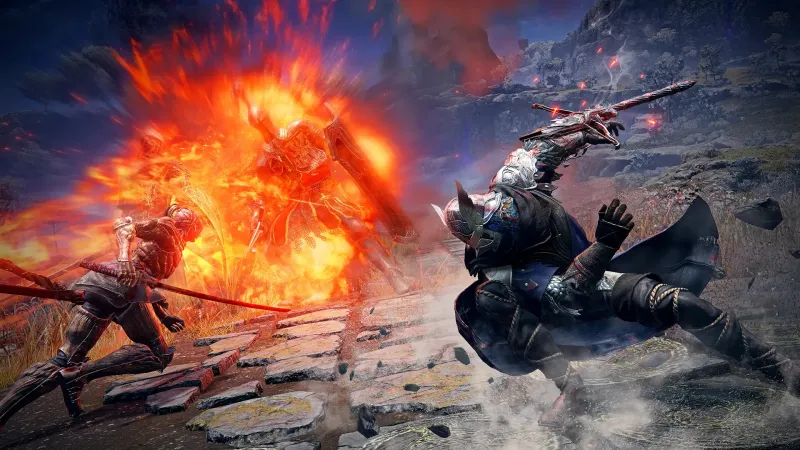
Dragon Quest 1& 2 HD-2D Remake First Impressions: Classic DQ Has Never Looked So Good

Anecdotally, it’s been said that in its native Japan, Dragon Quest is more popular than Final Fantasy, which is more popular abroad. This is most obvious for any fans of fantasy anime who will find Dragon Quest’s undeniable influence over the genre, from monster designs like Slimes to other fantasy tropes pioneered by the early Dragon Quest games.
As someone who grew up primarily in the United States, I’m in the camp of gamers more familiar with the Final Fantasy series, with only a passing familiarity with Dragon Quest. Plus, while newer entries like Dragon Quest 11 have been rapturously received by fans, it’s the older Dragon Quest games that hold that certain air of history and mystique for someone like me who’s more interested in the legacy of the series.
Which also means it’s been a pretty good couple of years for me as Square Enix is finally remaking these older, beloved, Dragon Quest games for modern systems – and with a fresh new look. Rather than a full, polygonal upgrade, Square Enix is utilizing the retro-modern fusion they call HD-2D from its Octopath series to revive games like Dragon Quest 3 for modern audiences. And that continues with its next remake, Dragon Quest 1 & 2 HD-2D Remake, coming later this year.
Despite being released before Dragon Quest 3, Dragon Quest 1 and Dragon Quest 2 are actually sequels, so playing Dragon Quest 3, 1, and 2 in that order is chronologically correct within the game’s universe. I got a chance to play those next two recently on PlayStation 5, and I came away even more excited to finally discover these early Dragon Quest titles.
The Best Way to Play the Original Dragon Quest Games
The first three Dragon Quest games comprise the “Erdrick Trilogy” – named after the hero of Dragon Quest 3. It’s no spoiler to say that in Dragon Quest 3, Erdrick is successful in his mission to save the kingdom from evil. You will then play as Erdrick’s descendents in Dragon Quest 1 & 2. Thus, Square Enix is actually releasing these games in chronological order, which is nice of them.
Up until these remakes, these have only been released as ports on mobile and certain game consoles, but there’s no need to bother with those now, unless you want a truly classic experience.
How Square Enix is Modernizing Dragon Quest
Given the legendary status of these games, Square Enix has to walk a bit of a tightrope trying to maintain parts of them that fans already love while modernizing some of the more dated bits. These changes, aside from the art style, are typically related to gameplay and storytelling, I’m told. In Dragon Quest 1 for example, there was no party system in the series yet, so the whole campaign is played using a single character who fights one enemy at a time. This has been changed so that now the player, while still solo, faces multiple enemies at once.
The two games are also “shorter” compared to modern RPGs, with How Long to Beat clocking Dragon Quest 1 at around 10 hours, while Dragon Quest 2 dials it up to 16 hours of playtime. Square Enix says they’ve beefed up some of the content and cutscenes to try and push those numbers up a bit, but don’t expect to be suddenly playing a 100-hour RPG.
Even Better Looking Than Dragon Quest 3 HD-2D
The main draw of the remakes, certainly, is the visual style. Square Enix has championed this HD-2D art style – wherein pixelated 2D player character models exist in a vibrant, 3D world. Despite already playing games like Octopath Traveler 2 and Dragon Quest 3 HD-2D in this art style, it somehow looks even better in the upcoming collection.
The textures are even sharper, making the contrast between the 2D pixels and the 3D world starker, but more striking as a result. The 2D pixels have also received an upgrade, though you might not realize it at first. I compared some of the screenshots Square Enix sent over with my copy of Dragon Quest 3 HD-2D running on the Switch, and they’re quite different, with the pixelwork in Dragon 1 & 2 HD-2D looking much more detailed and sophisticated than the pixels in Dragon Quest 3 HD-2D.
The character models are a little larger, and much more detailed with their armor and weapons looking particularly sophisticated in the new remakes. I found the art style, combined with the gorgeous music, drawing me into the world of Dragon Quest quite completely. Square Enix put out some chips during my preview event and I found myself munching away while fully engrossed in the story of the hero’s party discovering the wreckage of a fallen kingdom.
In a way, Dragon Quest’s, let’s say “classic” storyline and trope-ish setting is easier to appreciate today than maybe a decade ago. Nowadays, with graphics as advanced as they are and storylines trying to compete with the biggest movies and TV shows, Dragon Quest is a reminder that some stories are timeless for a reason. I’m looking forward to playing both of these HD-2D remakes when they’re released on October 30, 2025 for all major systems – including the Nintendo Switch 2.
Matt Kim is IGN’s Senior Features Editor.






